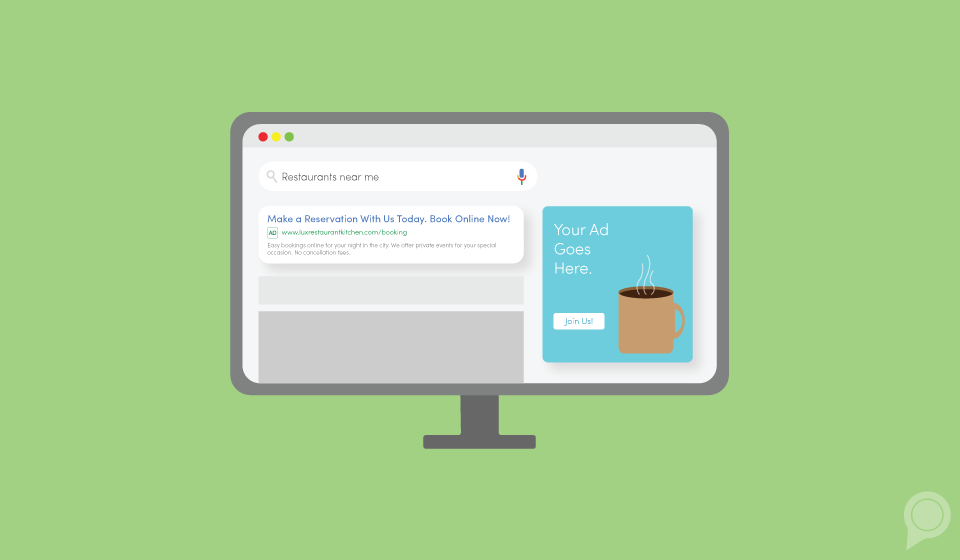

You may have read about Google display and search ads in our paid advertising blogs in the past, but do you know the difference between the two?
These are distinctly different types of ads, but you may not recognize them merely from their names. Because of this, we are here to break down the specific differences between the two and the different ways they benefit your business.
Google Display Ads
If you’ve visited any website on the internet, you’ve seen a display ad.
Picture this, you’re visiting a website to book plane tickets for an upcoming trip, and on the right of the screen, there is an advertisement for a hotel chain. This advertisement is a display ad, and it can be used by businesses to redirect potential customers to their website.
Think of it this way; display ads give a business the option to promote their products or services even while a potential customer is navigating other websites. Whether someone is catching up on a news source or watching videos on YouTube, a business can still reach internet users on these webpages with the help of display ads.
Display ads can be used most effectively by targeting specific people or websites for the advertisement.
These ads also focus on audience-based and content-based targeting.
Audience targeting can be refined to focus on the following:
Content targeting is narrowed to the following categories:
Google Search Ads
You can look at Google search ads as a direct response to a user’s search, and these ads are based around the immediate need for a product or service.
When a user is searching specifically on Google, a search ad will display in their Google results. This ad is in direct response to the search that the user was conducting.
It is critical to know, however, that these are not average search results in Google. These search ads will display above organic search results, and they will be identified by a small “Ad” box located next to the page’s URL.
Setting up the capabilities for this advertising option allows for your business to show up before the organic search results that a user typically interacts with. The user must continue to scroll through the page to reach these results where the search advertisements at the top of the page require no further scrolling by the user.
Check this blog for a better understanding of the layout of your Google search results.
There is more immediacy behind search ads because they are acting directly on a user’s keyword input and can promote quick action by the user to visit a website to browse products or purchase something quickly.
Take the keywords, inexpensive restaurant, for example, in this visual:
Some updates have been made recently to Google’s advertising metrics that are worth keeping up-to-date on. Read this blog to learn more.
Final Thoughts
It is easy to feel bogged down by marketing terms, and that is why we’re here to help when it comes to differentiating Google search ads and display ads.
Advertising for your business is essential, especially on Google, so gathering and implementing this information for your business will give perspective on how to best approach your business’s advertising wants and needs!
At RevLocal, we understand how important support throughout the paid advertising process can be. Click here to find out which paid advertising strategy is right for your business!
Subscribe to our email list to get the latest digital marketing content delivered to your inbox each week!